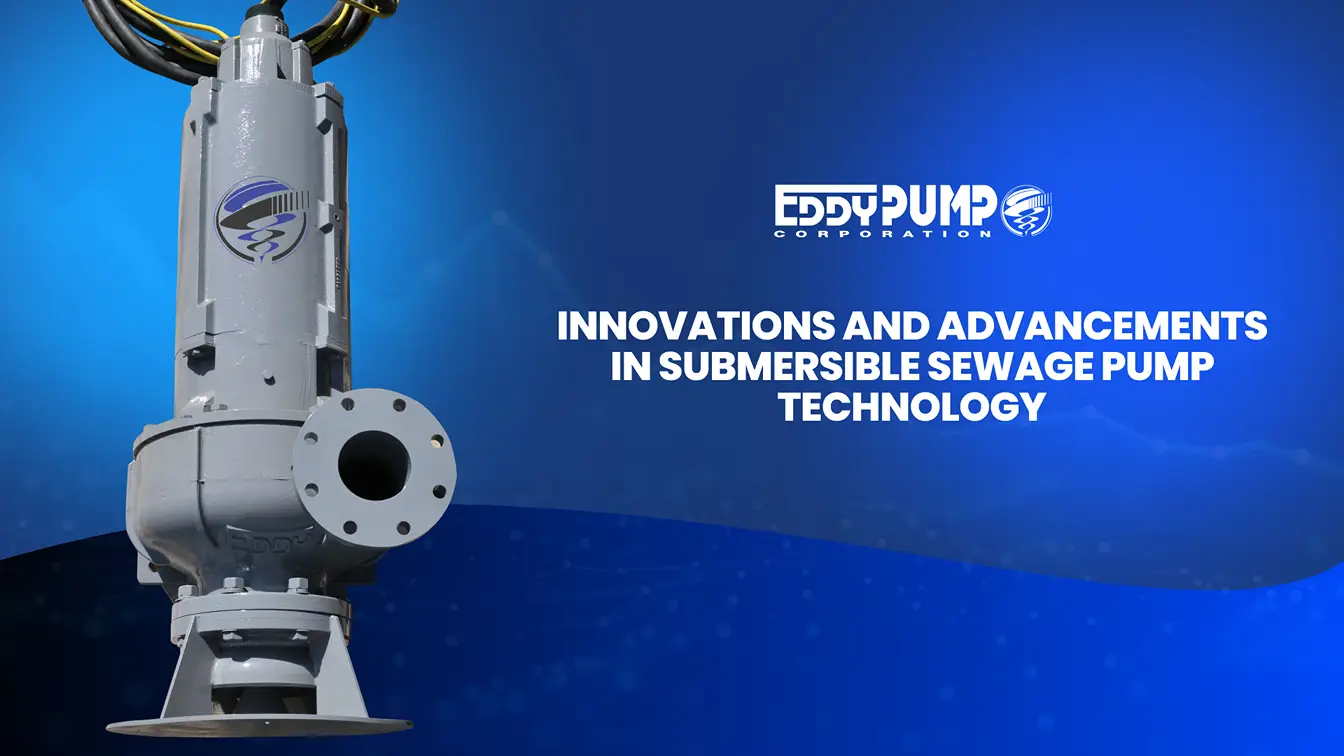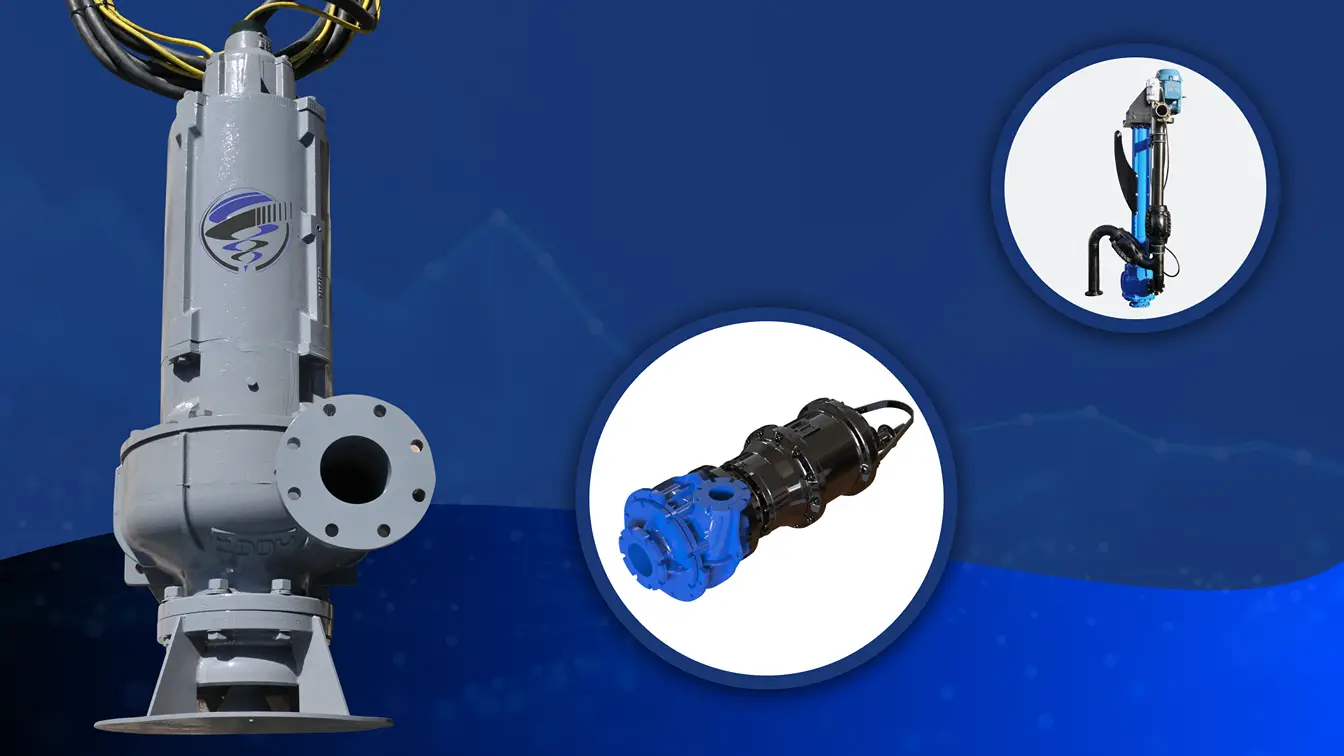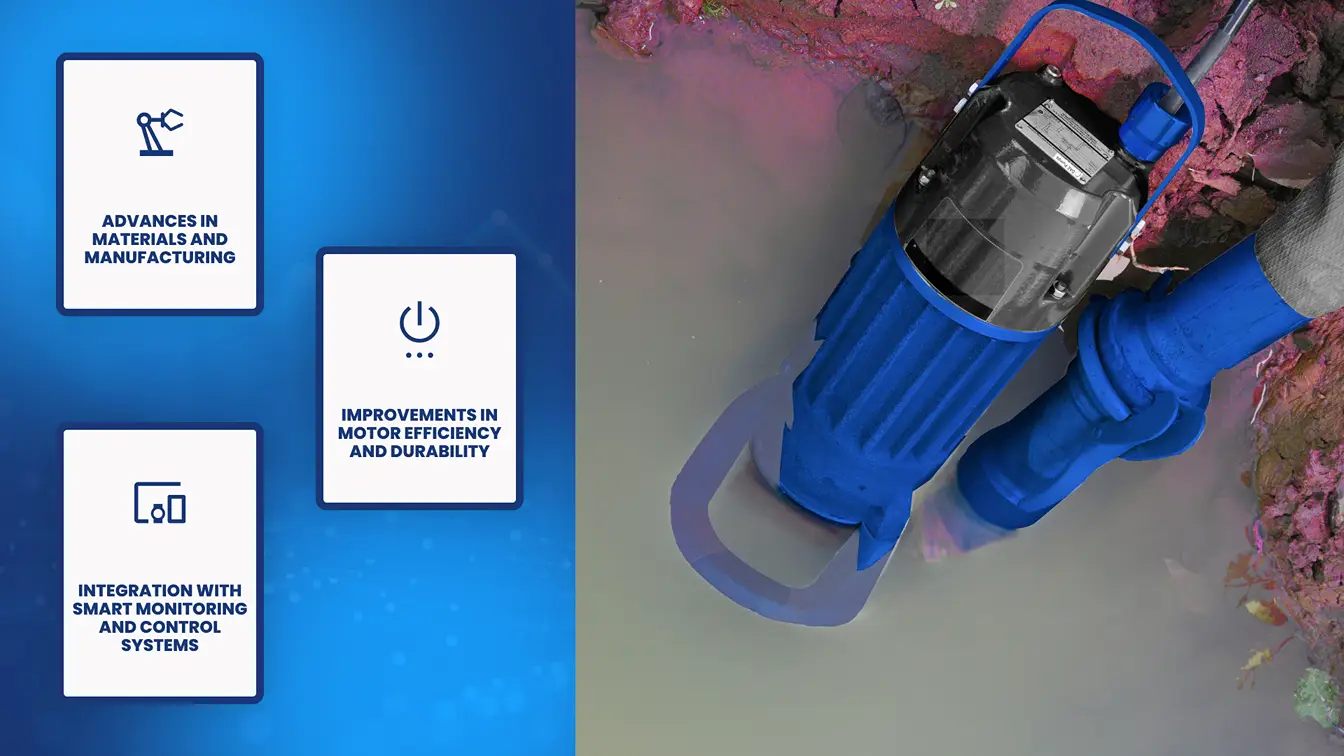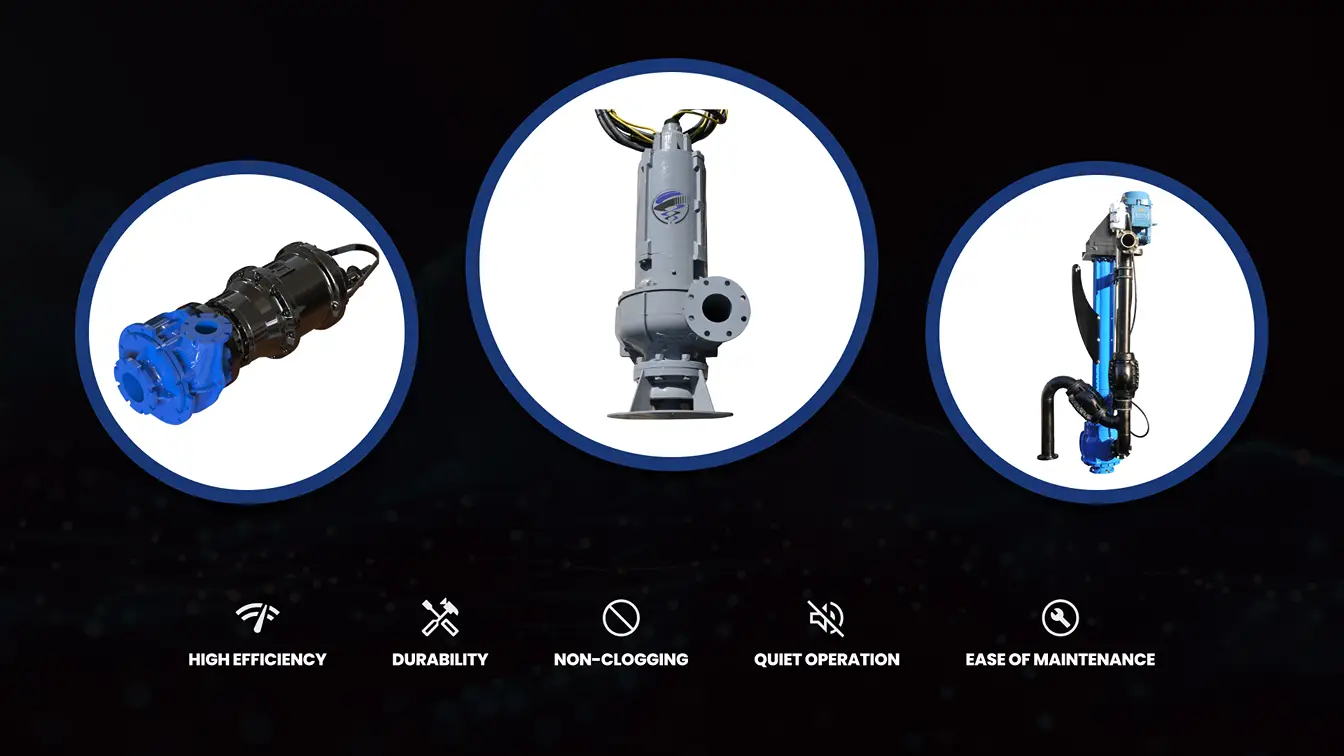
Introduction to Submersible Sewage Pumps
Submersible sewage pumps have revolutionized wastewater management in various settings, from residential homes to large-scale industrial facilities. These pumps operate fully submerged in the liquid they are designed to pump, offering significant advantages over traditional pumps.
Their design minimizes noise and mitigates the risk of pump damage from dry running, making them highly efficient and reliable. Unlike conventional pumps that must be placed above the fluid level, submersible pumps are installed directly within the sewage. This simplifies the pumping process and reduces the need for extensive piping systems. This design also reduces the likelihood of cavitation—a common issue in traditional pumps where vapor bubbles form and cause damage when they collapse.
Furthermore, because they are submerged, these pumps are naturally cooled by the surrounding fluid, which helps prevent overheating and extends their operational life.
Importance of Innovation in Sewage Pump Technology
With rising urbanization and environmental regulations becoming more stringent, the need for advanced sewage pumping solutions is more critical than ever. Innovations in sewage pump technology address these demands by enhancing performance, increasing durability, and integrating intelligent technologies. These advancements ensure that submersible sewage pumps remain efficient, reliable, and capable of meeting the challenges posed by modern sewage management systems.
New materials and manufacturing techniques have led to pumps that are more resistant to wear and corrosion, while improvements in motor efficiency reduce energy consumption and operational costs. Additionally, integrating digital monitoring systems allows for real-time tracking of pump performance and early detection of potential issues, which can prevent costly breakdowns and repairs. These technological advancements help meet regulatory standards and contribute to more sustainable and cost-effective wastewater management practices.
Evolution of Submersible Sewage Pumps
Historical Development
The development of sewage pumps began in the early 20th century, driven by the need for efficient wastewater management. Initially, sewage pumps were large, cumbersome devices often requiring significant manual intervention to operate and maintain. These early designs were not really efficient and were quite prone to frequent breakdowns, making wastewater management labor-intensive and costly.
The introduction of submersible sewage pumps in the mid-20th century marked a significant advancement in this technology. These pumps, designed to operate while fully submerged in sewage, dramatically improved the efficiency and reliability of sewage pumping systems. By being placed directly within the sewage system, submersible pumps eliminated the need for complex piping and reduced the overall footprint of the installation.
This innovation simplified the setup and maintenance of sewage systems and significantly lowered the costs associated with installation and upkeep. The ability to operate underwater also helped mitigate noise and reduce the risk of pump damage due to dry running, thus extending the life of the equipment.
Key Milestones and Technological Advancements
Several key milestones have shaped the evolution of submersible sewage pumps, leading to the advanced systems of today. In the 1970s, the development of corrosion-resistant materials marked a significant breakthrough for these pumps. Materials such as stainless steel and specialized polymers enabled pumps to handle more aggressive and chemically diverse sewage, significantly extending their lifespan and reliability. This was crucial in allowing sewage pumps to operate effectively in harsh environments, thereby reducing the frequency of maintenance and requirements for replacements.
The 1990s saw further advancements with the introduction of more efficient motors. These new motor designs improved the energy efficiency of sewage pumping systems, making them more cost-effective and environmentally friendly. Enhanced motor efficiency meant that pumps could handle higher loads with less energy, reducing operational costs and the environmental footprint of sewage management systems. Additionally, these motors were designed to be more durable and capable of withstanding the continuous, heavy-duty operation required in sewage systems.
In recent years, integrating digital monitoring and control systems has transformed submersible sewage pumps into smart devices. These advanced systems enable real-time data collection and analysis, allowing for self-diagnosis and remote operation. Intelligent monitoring systems can track various performance metrics such as flow rate, pressure, and motor temperature, providing valuable insights into the health and efficiency of the pump. This capability enables operators to perform predictive maintenance, addressing potential issues before they lead to pump failure. Furthermore, remote operation allows immediate adjustments and interventions without physical presence, significantly reducing downtime and maintenance costs.
These technological advancements have enhanced the performance and reliability of submersible sewage pumps and paved the way for more efficient and sustainable wastewater management practices. As technology evolves, we can expect further innovations that will continue improving these critical systems’ capabilities and efficiency.
Modern Design and Functionality
Overview of Current Submersible Sewage Pump Designs
Modern submersible sewage pumps boast advanced designs that enhance performance and reliability. These pumps typically feature robust, corrosion-resistant housings that protect internal components from the harsh environment of a sewage system. They are equipped with powerful, efficient motors that can handle high volumes of waste with minimal energy consumption. Additionally, modern designs incorporate advanced impellers that can handle solid waste and debris without clogging.
These pumps’ housings are often made from materials like stainless steel or high-strength polymers, providing excellent corrosion and wear resistance. This ensures long-term durability, as the pumps are constantly exposed to aggressive sewage environments. Advanced sealing technologies also prevent leaks and protect internal components from contamination.
The motors used in modern submersible sewage pumps are designed to be both powerful and energy-efficient. They can handle large volumes of waste while consuming less energy, which helps to reduce operational costs. These motors are often equipped with thermal overload protection to prevent overheating and ensure reliable operation even under heavy loads.
Advanced impeller designs are another critical feature of modern submersible sewage pumps. These impellers are made from durable materials designed to handle solid waste and debris without clogging. This is achieved through features like vortex impellers, which create a swirling motion that helps to keep solids suspended and prevents blockages. These impellers also improve the pump’s overall efficiency by reducing energy losses and ensuring smooth fluid flow.
Key Features and Benefits
Modern submersible sewage pumps offer numerous features and benefits, including:
High Efficiency: Advanced motor designs and materials reduce energy consumption while maintaining high performance. These motors deliver high power output with minimal energy loss, making them ideal for efficiently handling large volumes of waste.
Durability: Corrosion-resistant materials and robust construction ensure a long service life even in harsh conditions. High-quality materials like stainless steel and advanced polymers provide excellent resistance to corrosion, wear, and chemical attack, ensuring that the pumps can withstand the demanding conditions of a sewage environment.
Non-Clogging: Specialized impeller designs allow the pump to handle solid waste and debris without frequent blockages. These impellers create a vortex effect that keeps solids suspended and prevents them from clogging the pump, ensuring continuous operation and reducing maintenance requirements.
Quiet Operation: Submerged operation minimizes noise, making these pumps ideal for residential and commercial settings. These pumps operate underwater, producing very little noise, making them suitable for use in locations where noise reduction is essential, such as residential areas and commercial buildings.
Ease of Maintenance: Modern pumps are designed for easy access and servicing, reducing downtime and maintenance costs. Features like quick-release couplings, quickly removable components, and self-cleaning mechanisms make routine maintenance and repairs easy, minimizing downtime and ensuring the pumps remain in optimal condition.
Comparison with Traditional Sewage Pumps
Compared to traditional above-ground sewage pumps, submersible sewage pumps offer several advantages. They are more efficient, as they do not require priming and can operate continuously without overheating. Traditional pumps often require priming to remove air from the system before operating, which can be time-consuming and labor-intensive. On the other hand, submersible pumps are permanently submerged and do not require priming, allowing for continuous and uninterrupted operation.
Their submerged operation reduces noise and minimizes the risk of air locking. Noise can be a significant issue with traditional above-ground pumps, especially in residential and commercial settings. Submersible pumps operate underwater, which significantly reduces the noise they produce. Additionally, the risk of air locking, where air trapped in the pump impedes its operation, is virtually eliminated with submersible pumps, ensuring more reliable performance.
Furthermore, submersible pumps are less prone to damage from external elements, as they are protected by the fluid they are pumping. Traditional pumps are exposed to environmental factors like dust, debris, and weather conditions, which can cause damage and reduce lifespan. Submersible pumps are enclosed in protective housing and operate underwater, shielding them from these external elements and helping to extend their operational life.
In summary, modern submersible sewage pumps offer significant improvements in efficiency, durability, noise reduction, and ease of maintenance compared to traditional above-ground sewage pumps. These advancements make them ideal for various applications, from residential sewage management to large-scale industrial and municipal systems.
Technological Innovations in Submersible Sewage Pumps
Advances in Materials and Manufacturing
Advanced materials such as stainless steel, cast iron, and high-strength polymers have significantly improved the durability and performance of submersible sewage pumps. These materials resist corrosion, abrasion, and chemical damage, ensuring the pumps can handle various sewage compositions. Additionally, modern manufacturing techniques such as precision casting and CNC machining have improved the quality and consistency of pump components, resulting in more reliable and efficient products.
Improvements in Motor Efficiency and Durability
Motor efficiency is a critical factor in the performance of submersible sewage pumps. Recent innovations have focused on developing motors that deliver higher power outputs while consuming less energy. This has been achieved through advanced motor designs, high-quality bearings, and efficient cooling systems. Enhanced motor durability has also been a focus, with improvements in insulation materials and thermal management systems ensuring that motors can operate reliably for extended periods without failure.
Integration with Smart Monitoring and Control Systems
Integrating intelligent monitoring and control systems has transformed submersible sewage pumps into smart devices capable of real-time data collection and analysis. These systems can monitor critical parameters such as flow rate, pressure, and motor temperature, providing valuable insights into pump performance and health.
Advanced control systems allow for remote operation and diagnostics, enabling operators to detect and address issues before they lead to pump failure. This not only improves reliability but also reduces maintenance costs and downtime.
Case Studies of Innovative Submersible Sewage Pump Applications
Residential Applications and Benefits
Submersible sewage pumps manage wastewater from homes and apartment complexes in residential settings. These pumps are typically installed in septic tanks or sewage basins and transport sewage to municipal treatment facilities. Modern submersible pumps’ quiet operation and reliability make them ideal for residential use. For example, in a suburban community in the United States, installing high-efficiency submersible sewage pumps resulted in a 20% reduction in energy consumption and a significant decrease in maintenance requirements.
Commercial and Industrial Applications
In commercial and industrial settings, submersible sewage pumps manage large volumes of wastewater generated by factories, hotels, hospitals, and other facilities. These pumps are designed to handle a variety of waste compositions, including solid waste, chemicals, and high-temperature fluids.
For instance, a large European manufacturing plant installed advanced submersible sewage pumps with intelligent monitoring systems. The result was a 30% increase in operational efficiency and reduced unplanned downtime due to early detection and resolution of potential issues.
Municipal Sewage Management and Environmental Impact
Municipal sewage systems rely heavily on submersible sewage pumps to transport wastewater from residential and commercial areas to treatment plants. The efficiency and reliability of these pumps are critical for maintaining public health and environmental standards. In a major Asian city, implementing advanced submersible sewage pumps with integrated intelligent monitoring systems led to a 25% reduction in energy consumption and a significant improvement in sewage management efficiency. This not only reduced operational costs but also minimized the environmental impact of the municipal sewage system.
Environmental Benefits of Advanced Submersible Sewage Pumps
Reducing Energy Consumption and Operational Costs
One of the primary environmental benefits of advanced submersible sewage pumps is their ability to reduce energy consumption. High-efficiency motors and advanced impeller designs minimize the energy required to move large volumes of sewage, resulting in lower operational costs and reduced greenhouse gas emissions. Additionally, intelligent monitoring systems optimize pump performance, further enhancing energy efficiency.
Minimizing Environmental Impact
Advanced submersible sewage pumps are designed to minimize their environmental impact in several ways. Corrosion-resistant materials prevent the release of harmful substances into the environment, while efficient motors reduce energy consumption and associated emissions. Furthermore, handling solid waste and debris without clogging minimizes the risk of sewage spills and contamination.
Compliance with Environmental Regulations
As environmental regulations become more stringent, the need for compliant sewage pumping solutions has increased. Advanced submersible sewage pumps are designed to meet or exceed regulatory requirements, ensuring sewage management systems operate within legal limits. This compliance protects the environment and helps organizations avoid fines and legal issues associated with non-compliance.
Challenges and Solutions in Submersible Sewage Pump Technology
Common Challenges Faced in Submersible Sewage Pump Applications
Despite their advantages, submersible sewage pumps face several challenges. These include clogging due to solid waste, corrosion from aggressive sewage compositions, and motor failure due to overheating or poor maintenance. Additionally, the need for regular maintenance and the risk of damage during installation or operation can impact the reliability and efficiency of these pumps.
Innovative Solutions and Best Practices
Innovative solutions and best practices have been developed to address these challenges. For example, advanced impeller designs that minimize clogging, corrosion-resistant materials that extend pump life, and intelligent monitoring systems that provide real-time data on pump performance are now commonly used. Regular maintenance and proper installation techniques are also critical for ensuring the long-term reliability of submersible sewage pumps.
Future Challenges and Potential Solutions
Submersible sewage pump technology must address several emerging challenges in the future. These include the need for even greater energy efficiency, the ability to handle increasingly complex sewage compositions, and the integration of more advanced digital technologies. Potential solutions include developing new materials and coatings, using artificial intelligence for predictive maintenance, and evolving intelligent monitoring and control systems.
The Future of Submersible Sewage Pumps
Emerging Trends and Future Innovations
Several emerging trends and future innovations are set to shape the future of submersible sewage pumps. These include the development of more energy-efficient motors, using advanced materials to improve durability and performance, and integrating IoT technologies for real-time monitoring and control. Additionally, artificial intelligence and machine learning advancements are expected to revolutionize sewage pump management by enabling predictive maintenance and optimization.
The Role of IoT and Digital Technology in Sewage Pump Management
The integration of IoT and digital technologies is transforming sewage pump management. Intelligent sensors and monitoring systems provide real-time data on pump performance, enabling operators to detect and address issues before they lead to pump failure. IoT technologies also allow for remote operation and diagnostics, reducing the need for on-site maintenance and improving overall efficiency. As these technologies evolve, they will be increasingly important in managing submersible sewage pumps.
Predictions for the Next Decade
Over the next decade, we expect significant submersible sewage pump technology advancements. These will include further improvements in energy efficiency, the development of more durable and corrosion-resistant materials, and the integration of advanced digital technologies. Additionally, the increasing focus on environmental sustainability will drive the growth of pumps that minimize energy consumption and environmental impact. As these innovations continue to emerge, submersible sewage pumps will become even more efficient, reliable, and capable of meeting the demands of modern sewage management systems.
Maintenance and Longevity
Importance of Regular Maintenance
Regular maintenance is critical for ensuring the longevity and reliability of submersible sewage pumps. Routine inspections and servicing can help identify and address potential issues before they lead to pump failure. This includes checking for wear and tear signs, ensuring impellers are free from blockages, and verifying that motors are operating efficiently.
Tips for Extending the Lifespan of Submersible Sewage Pumps
Several tips can help extend the lifespan of submersible sewage pumps:
Regular Inspections:
- Conduct routine inspections to identify and address potential issues early.
- Look for signs of wear and tear, such as cracks, corrosion, or unusual noises.
- Check the electrical connections and seals to ensure they are intact and functioning correctly.
- Regular inspections can help catch minor problems before they escalate into major issues, saving time and repair costs.
Proper Installation:
- Ensure that pumps are installed correctly to minimize the risk of damage and improve performance.
- Follow the manufacturer’s installation guidelines to prevent misalignment and improper setup.
- Use appropriate mounting brackets and hardware to secure the pump firmly in place.
- Proper installation helps reduce vibrations and wear, ensuring smoother operation and extending the pump’s lifespan.
Use Quality Parts:
- Use high-quality replacement parts and materials to ensure long-term reliability.
- Invest in genuine parts from reputable manufacturers to avoid the risks of inferior components.
- Using quality parts ensures that the pump operates at peak efficiency and reduces the likelihood of premature failures.
- High-quality parts are often designed to withstand the harsh conditions of sewage systems, providing excellent durability and performance.
Monitor Performance:
- Utilize intelligent monitoring systems to track pump performance and detect issues before they lead to failure.
- Install sensors to monitor critical parameters such as flow rate, pressure, and motor temperature.
- Use data analytics to identify trends and predict potential problems, allowing for proactive maintenance.
- Monitoring performance helps optimize pump operation, enhance efficiency, and prevent unexpected breakdowns.
Schedule Maintenance:
- Follow a regular maintenance schedule to keep pumps in optimal condition.
- Perform routine tasks such as cleaning the impellers, checking and replacing seals, and lubricating moving parts.
- Adhere to the manufacturer’s recommended maintenance intervals to ensure comprehensive care.
- Scheduled maintenance helps maintain the pump’s performance, reduces wear and tear, and extends its service life.
Professional Servicing and Support
Professional servicing and support are essential for maintaining the reliability and performance of submersible sewage pumps:
Qualified Technicians:
- Employ qualified technicians with the expertise and tools to diagnose and address complex issues.
- Experienced professionals can identify underlying problems that might not be apparent during routine inspections.
- They are trained to handle specialized equipment and can perform repairs with precision, ensuring the pump’s integrity.
Diagnosing Complex Issues:
- Professional servicing involves thorough diagnostics to pinpoint the root cause of any problems.
- Technicians use advanced diagnostic tools and techniques to accurately assess the pump’s condition.
- This comprehensive approach helps implement effective solutions, prevent recurring issues, and enhance pump performance.
Extending Lifespan:
- Professional servicing can extend the lifespan of pumps by ensuring they operate efficiently and reliably.
- Regular servicing helps prevent minor issues from becoming significant faults, reducing the need for costly repairs or replacements.
- Technicians can provide maintenance tips and recommendations tailored to the specific pump model, further enhancing its longevity.
Reducing Maintenance Costs:
- Proactive maintenance and timely repairs can significantly reduce overall maintenance costs.
- By addressing issues early, professional servicing helps avoid expensive emergency repairs and downtime.
- Investing in regular professional servicing ensures that the pump remains in optimal condition, leading to lower long-term operational costs.
Minimizing Downtime:
- Professional servicing minimizes downtime by quickly resolving issues and restoring the pump to full functionality.
- Technicians work efficiently to perform necessary repairs and maintenance, reducing the time the pump is out of service.
- Minimizing downtime is crucial for maintaining continuous operation in critical applications, such as municipal sewage systems and industrial facilities.
Conclusion
Summary of the Advancements in Submersible Sewage Pump Technology
Submersible sewage pump technology advancements have significantly improved sewage management systems’ efficiency, reliability, and environmental sustainability. Innovations in materials, motor efficiency, and intelligent monitoring systems have transformed submersible sewage pumps into highly efficient and intelligent devices capable of meeting the demands of modern sewage management.
Final Thoughts on the Future of Sewage Pump Innovations
As we look to the future, the continued evolution of submersible sewage pump technology will play a critical role in addressing the challenges of urbanization and environmental regulations. Integrating advanced materials, energy-efficient motors, and digital technologies will ensure that submersible sewage pumps remain at the forefront of sewage management solutions. By embracing these innovations, we can create more efficient, reliable, and sustainable sewage systems that meet the needs of today’s world while protecting our environment for future generations.




